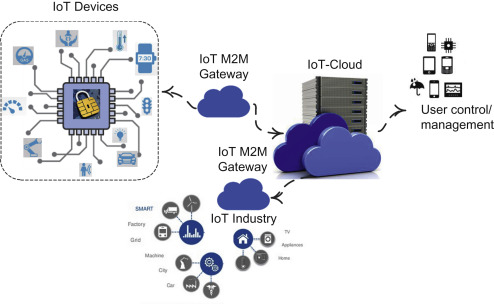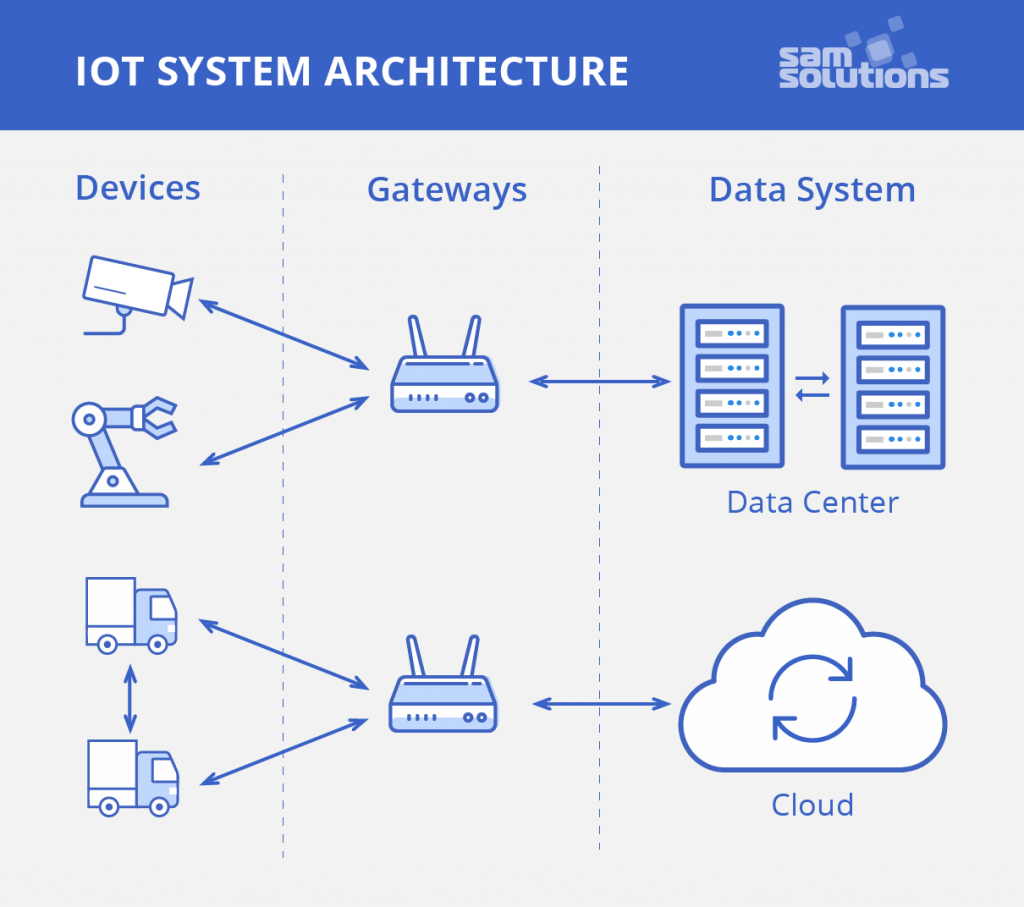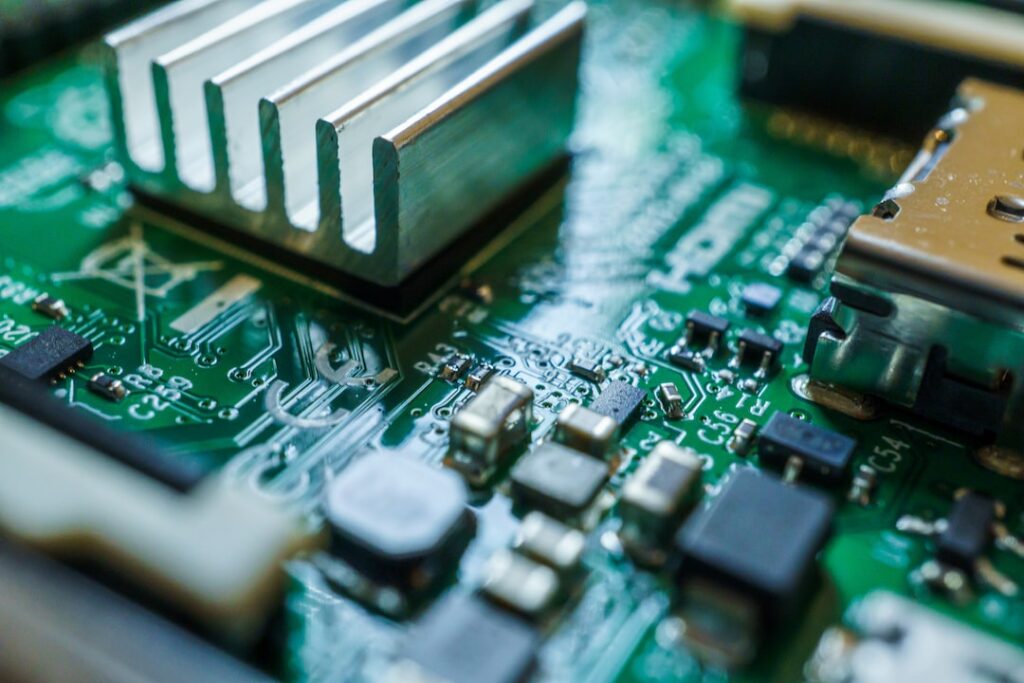The Internet of Things (IoT) has been making waves in the tech industry for some time now. But how does IoT communication work? This question is on everyone’s minds, as it can have a huge impact on how we use technology and interact with our environment.
With so much potential at stake, it’s important to understand IoT communication and what challenges are involved when implementing these solutions. In this blog post, we’ll explore the answer to “how does IoT communication work” and understand the basics of this technology.
Table of Contents
Types of Communication in IoT
In order to fully answer “how does IoT communication work,” let’s take a look at the types of communication present in IoT.
Human to Machine (H2M)
H2M communication is the interaction between a human and an IoT device, such as sensors or actuators. This type of communication allows humans to give input in the form of speech, text, or images which are then analyzed by the machine and responded back with either visual display or text output.
This type of communication is useful for everyday tasks that require assistance from machines. It also has user-friendly interfaces that can be quickly accessed following instructions provided on it, responds quickly to any fault or failure and its features and functions can be customized according to needs.
Machine to Machine (M2M)
M2M communication takes place between two network devices without any human intervention where machines exchange data automatically through wired or wireless connections using public networking technologies like Ethernet and cellular networks.
The concept behind this type of communication is used by IoT for creating large “cloud” networks consisting of multiple devices communicating with each other through cloud networking platforms. This makes it easier for them to transfer information securely over long distances at a faster rate than ever before possible.

(Source)
How Does IoT Communication Work?
IoT devices communicate with each other by using a combination of gateways, platforms, connectivity, and user interfaces.
Devices
IoT devices are typically small physical objects that contain embedded technology such as sensors or processors.
These objects can be connected to the internet via Wi-Fi or Bluetooth and can collect data from their environment. This data is then sent to a cloud platform for further processing and analysis.
Examples of IoT devices include smart thermostats, security cameras, fitness trackers, and home automation systems.
Gateways
Gateways act as bridges between different types of networks such as local area networks (LANs) and wide area networks (WANs).
They provide a secure connection between two different types of networks so that data can be transferred back and forth without any risk of interception or tampering.
IoT gateways also enable communication between different kinds of IoT devices on the same network by translating protocols from one device to another.
Platforms
Platforms are software solutions that allow developers to create applications for use in an IoT system.
These platforms provide tools for managing large amounts of data generated by connected devices in real-time while also providing access control mechanisms for ensuring secure communication among these devices.
Popular examples include Amazon Web Services (AWS), Microsoft Azure, IBM Watson IoT Platform, and Google Cloud Platform (GCP).
Connectivity
Connectivity refers to the ability of two or more machines to exchange information over a network connection like Wi-Fi or cellular service providers like Verizon Wireless or AT&T Mobility LLC.
It is essential for enabling remote monitoring and control capabilities within an IoT system since it allows users to access their connected device’s data from anywhere in the world at any time they want regardless if they are near it physically or not.
User Interface
The user interface is what enables humans to interact with computers through graphical elements like buttons, menus, icons, and text boxes.
In order for an application running on an IoT device to communicate with its user, there needs to be some kind of visual representation,
For example, when you switch your home appliances ON or OFF using voice commands through Alexa Echo Dot, this interaction happens because Alexa has been programmed with certain UI elements. It helps us understand what we need to do next and how our command will get executed.

(Source)
How Do IoT Devices Operate
IoT devices are connected to the internet and communicate with other systems or applications over it. The communication is done through a combination of hardware, software, and network protocols.
IoT devices have sensors that collect data from their environment and send them over the internet using wireless technologies like Wi-Fi, Bluetooth, and Zigbee.
Hardware
The hardware component in an IoT device consists of physical components like processors (microcontrollers), memory chips (RAM & ROM), power sources (batteries, solar cells) along with external sensors which are used to detect changes in the environment.
These components interact with each other to enable communication between different parts of the system.
Software
The software component includes programs written for microcontrollers that control how data is collected by sensors and transmitted over the internet.
It also helps process incoming information from other systems or applications before sending it back out again as response messages or commands for controlling actuators such as motors or lights.
Network Protocols
Network protocols define how two machines can communicate with each other on a network connection such as Ethernet or Wi-Fi connections used by most IoT devices today.
Commonly used network protocols include HTTP(S), MQTT, and CoAP. This help ensure the secure transmission of data between different nodes on a network connection.
They also prevent any interference from outside sources like hackers trying to access sensitive information stored within these networks.
Cloud Applications
Finally, cloud applications provide an interface where users can monitor their connected devices remotely and manage them accordingly. This allows users to keep track of what’s happening in real-time while also providing additional features.
Conclusion
How does IoT communication work? Now that we have learned the basics of IoT communication, we can start harnessing its potential.
From smart homes to industrial automation, the possibilities are endless. As technology continues to evolve, so too will the capabilities of IoT communications. With continued investment and development, we can expect even more exciting advances in this field over the coming years.
The world is becoming increasingly connected through the Internet of Things (IoT). As we continue to develop and implement IoT technology, it’s important that communication between devices is secure, reliable, and efficient.
We need solutions that will ensure all data sent over networks remains safe while providing an optimal user experience. By creating new technologies that facilitate seamless communication between devices across multiple platforms, we can make sure our digital future stays secure and vibrant.





